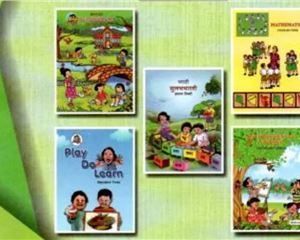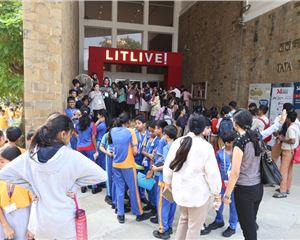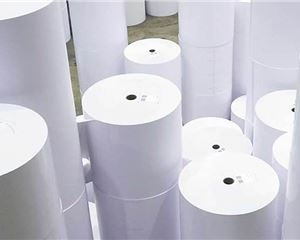Malayala Manorama is known for its quality news and superior publications. Ramu Ramanathan visits the print units in Kerala in order to grasp the ops
Established in 1888, Malayala Manorama is one of world’s largest daily newspapers which registers a readership of more than 95 lakhs with a print order exceeding 2.5 million copies a day for 89 editions. Malayala Manorama has 11 printing centres in Kerala, five outside Kerala, three outside India and online editions.
The group’s flagship daily, Malayala Manorama in Malayalam language, is printed, inside and outside the 11 Kerala units as well as the three Gulf units. As P K Philip, the vice president (works) says, “The largest of these is the Kochi edition with more than 3.5 lakh copies. Kollam prints more than 2 lakh copies. The other centres are growing ...”
Philip attributes the growth to “the rise in education level and purchasing capacity of all classes of people.” He adds, “the newspapers that are being produced possess better quality”. Case in point is, Malayala Manorama has moved from an 8-pages colour newspaper to a 16-32-pages colour newspaper. Philip adds, “But ultimately, readers are attracted to a paper by the content.” There should be local news and editorial matter must be superb. This is the reason Malayala Manorama is rated as one of the best newspapers in India.
Time whizzes by
Philip has spent three decades at Malayala Manorama. An engineering graduate (1963), his first innings was a stint in an electrical engineering industry. At Malayala Manorama, he started his stint as a production manager. He recalls, “We had four print units in those days.”
He talks of the present and says, “On the printing side, we have opted for new presses. From single-width presses, we shifted to double-width presses and it meant more pages and more colour in the same space and with no increase in manpower. We have shifted to double-width presses, both new and second-hand. The refurbished second-hand machines are deployed in two of the printing units and these are as good as the new presses.”
Philip continues, “The second major thing is, we started with eight pages in colour, and maximum pagination of presses was 24-pages. When pagination went up we resorted to pre-printing and manual insertion at the point of delivery by the distributors. That is the way we started. Inserts have seen a dip now as it causes late delivery and distributors are wary of manual insertion in the morning. Then, we went in for pre-printing and use of on-line insertion at the printing plant itself. This takes up more space and increases manpower.”
Philip points out, “Malayala Manorama has opted for higher pagination presses. We have standardised on 40 page presses which can print 32 pages in colour”. The higher paginations are in demand during the festival seasons like Onam and Christmas.
A glance at the day’s newspaper indicates that it has a width of 350 mm. Philip says, “350 x 546 mm is the size of the broadsheet daily .” Malayala Manorama prints on 42.5 gsm newsprint. Philip and his production team are wary about see through, web breaks etc. So they are very fussy about the newsprint quality and take trial runs before any brand is accepted.
42.5 gsm and 40 gsm are becoming de-facto standards among Indian newspapers. The reasons are obvious, says Philip. A newsprint of lower grammage offers better yield. Newsprint of less than 45 gsm provides additional printable area for the same weight of the reel. At a recent Wan-Ifra seminar, a technical panel said, “Lower gsm means fewer newsprint rolls are required for an equivalent print run, there is less roll preparation to be done, less tapes because of few splices, less white paper waste and fewer shipments and deliveries.”
It also involves less damage, lowered storage and warehousing requirements and potentially fewer web breaks due to splice failures. There can be about 6% saving going from 45gsm to 42.5gsm. Philip agrees, “There are savings in copy distribution, as the weight of copies is reduced. Importantly, there are environmental benefits.”
This is the reason, 60% of newsprint used in India is 42.5gsm.
When I ask, Philip about web breaks, he replies that there are no major production challenges. The team at Malayala Manorama closely monitors the number of web breaks. Philip says, “We monitor the web breaks and report web breaks per thousand reels. The average is about 15 web breaks per thousand reels – and we hope to reduce it further.”
How, I ask? Most of these production challenges can be mitigated through modern press control technology and 24/7 operational focus, Philip says. Newsprint reels are carefully handled, web tensions are properly controlled and ink water balance is properly adjusted.
A strong foundation
Malayala Manorama has a divisional concept. Philip’s division oversees the upkeep of all equipment and planning for new equipment, as well as the day-to-day production, whether it is pre-press, press or post-press. It is total teamwork with 900 personnel spread across the 11 units in Kerala. Each centre has a separate engineer in charge who interacts with the editorial and other divisional teams.
Philip says, “The initial press building design and layouts are planned by us and then the civil construction is done under a separate division. It calls for lots of interaction between us, the construction team, architects and actual users.” Philip says, “We normally make a good plant layout and constitute a project team. The project progress is reviewed every two to three weeks.” He adds, “The reason almost all the established newspapers own their building with in-house production facility is not only for the newsrooms but also due to the importance of the printing and despatch facility. No newspaper can allow breakdowns. You have to be up and running round the clock.”
He feels the processes have become simpler. No more molten lead or manual typewriters or the process of turning hot lead into the individual letters that spelt the articles. Things are much more streamlined, now. It is a digital workflow up to platemaking.
Malayala Manorama has a simple thumb-rule. Philip says, “Whenever, we build a new plant, we always keep provision for an additional press. If you hunt for land afterwards, things can become prohibitively costly.”
The other focus area is: environment. Malayala Manorama has installed Effluent Treatment Plants (ETP) at all new units. The process has begun at the older units as well. Effluents are treated and the treated water is used for general purposes. There is fire-fighting kit at every new plant which includes sprinklers etc.
Philip says, “Along with the ETPs, we initiated treatment plants for water used in the press for printing. We have selected RO plants for the water used for printing. In the Kochi unit, we have an RO plant, which caters to the total requirement of the plant. All plants have to adhere to this norm even if things are expensive. The rules have to be followed.” The fire department in Kerala has stringent norms, they have to agree to the project plan and fire protection scheme.
Philip is mulling about a dust collector at one of the units on the folder which is getting extended to cover the slitters on the print units. He says, “We are initiating plans to have incinerators at all plants to dispose waste.”
Then there is a continuous battle on the newsprint wastage front. Philip says, “We have a lot of controls and monitor the waste on a daily basis, the reports are generated and then we collate the stats and act on it. The waste is about 2%.” This means, Malayala Manorama uses 98% of the newsprint.
Method in the daily madness
How does everything work, like clockwork? I ask Philip. He says, “Overall improvement in the printing skill of our operators and new technology like ink pre-set, loop back tension controls and systems like Quadtech/QI to maintain register and cut-off, modern CTPs, video plate punch bender etc make it work”.
Sometimes there can be tweaks to the system like reducing the ink limit as per the latest ISO specifications. Another parameter a keen operator keeps an eye for: opacity. For every one gsm newsprint reduction, the opacity reduces by 0.3% to 0.5%. Newsprint manufacturers try to reduce the loss of opacity by using additional fillers. In addition to skills and technology, a good plant has to monitor the quality of all consumables like ink, plates, pressroom chemicals etc.
Philip and his team keep a keen eye on maintenance cost and spare parts budget. Philip says, “I have to give a budget for monthly expenditure for every printing unit and get it approved at the beginning of the year. This is monitored in SAP. At the end of every month, we get a report showing the actual expenditure at every unit.
In order to improve print quality, Malayala Manorama participates in the International Newspaper Color Quality Club (INCQC) competition held by Wan-Ifra which is based on the specifications of ISO 12647-3. Philip says, “The standard provides targets for newspapers, who aspire to print consistent high quality newspapers. As a result we are vigilant about dot gain variations in the pre-press and press. Our pre-press is mapped. The settings are common. We test the dot gain measurement, regularly.”
Is it worth all this trouble, I ask Philip? Producing millions of newspapers wherein each copy has to reach the right address, maintaining these huge manufacturing plants?
He pauses and replies, “Malayala Manorama delivers reliable authentic and latest news with emphasis on local news. Even in the digital age, our news is sacrosanct.”
He concludes, “The reading habits of people are intact. There will be a readership for print media, the only question is how much. In Europe, the downward trend seems to have stopped. In India, print media is still going strong, especially in regional languages.”
The machines that make the news
Kottayam-headquartered Malayalam Manorama is on an investment spree. Sanath Shah, chairman of Manugraph says, “We are happy that Malayala Manorama has confirmed investment for 13 towers of the Smartline 4x1
Sanath Shah, chairman of Manugraph says, “We are happy that Malayala Manorama has confirmed investment for 13 towers of the Smartline 4x1 double width press for centres in Kerala.”
Meanwhile the first Mitsubishi 4x1 Diamondspirit newspaper press was installed at the Calicut unit of Malayala Manorama in September 2014 and handed over in November 2014. The subsequent two presses were installed at Kodimatha at Kottayam. A Diamondspirit arrived in Kollam while a press was installed at Pathanamthitta in June 2016.
The Mitsubishi press is a 4x1 double width press with a configuration of 4 x 4 colour towers + 1 x mono unit + five two-arm reel-stands + 1 2:2 rotary folder with one balloon former. The press boasts of a spray dampening system and auto inking, with an ink pumping system. Each press can print 32 pages of colour + 8 pages of black and white. This means a total newspaper size of 40 pages. Roy Alex, managing director, Newstech (India) says, “Two more MHI presses will arrive, one in Trivandrum in September 2017 and one in Kochi in December 2017.” Mumbai-based Newstech has also installed ten of Schur (previously)
Roy Alex, managing director, Newstech (India) says, “Two more MHI presses will arrive, one in Trivandrum in September 2017 and one in Kochi in December 2017.” Mumbai-based Newstech has also installed ten of Schur (previously Idab Wamac) inline inserter with packing lines on a combination of Smart-Line + TKS (used) + Front-Line + Uniman presses. This according to Alex, includes the Schur TGG 3200 single gripper and two A 955 on-line inserter.Then there is the made in India, Newstech, stack/pack-line with NTTS 300 stacker + NTPW 5000 plastic wrapper + Transpak cross-strapper. The cross-strappers at Malayala Manorama are from
The cross-strappers at Malayala Manorama are from Transpak and the joggers are from the USA. Newstech later developed the Jogger NTPJ-100. In Kochi and Thrissur, Malayala Manorama
In Kochi and Thrissur, Malayala Manorama have 4x2 TKS secondhand refurbished presses.
Susheel George: The Importance of pre-press at Malayala Manorama
The pre-press operations at Malayala Manorama are centralised. However there are localised facilities to cater to the local pre-press requirements. PPI schedules the mar-keting ads which reach pre-press for processing. Tools like Asura, Pitstop and Color Manager (Oncolor) are deployed for processing the ads and Binuscan for Image Processing. These systems ensure that the CMS is in place. Our final PDF files are colour managed and sent to different locations for operations. The proofing system is on Veripress-BenQ (Soft proofing) at the headquarters and for the rest of the units through
Our final PDF files are colour managed and sent to different locations for operations. The proofing system is on Veripress-BenQ (Soft proofing) at the headquarters and for the rest of the units through color managed Epson Star proofing (hard copy proofing).
Though we don’t have a fully automated workflow, we have optimised our systems and workflows. The procedures (SOPs / work instructions) and schedules are followed. Thanks to ISO 9001-2015. One of the objectives of Malayala Manorama is “on time delivery” of the newspaper. To meet this goal, 365 days of the year, the deadlines (time schedules) are set independently for editorial, marketing, pre-press, press and despatch (circulation). We provide the reasons for delay to the management during the daily review. This is for preventive and corrective action.
With standardisation we have harmonised the process between our various print locations. The procedures and work instructions are clear to our entire team across the units. Our job is to monitor, review the operations, delays, and wastages on a daily basis. We have daily meetings and operational review meetings to discuss the issues. We modify the procedures to meet the customer requirements (the set objectives). Also, we arrange in-house training programmes for our staff, and the advertising agencies.
The standardisation and teamwork helps us to tackle all kinds of emergencies and problem situations. The workflows, software versions are the same at all centres. During the failure of a system, we seek help from the nearest unit for support. It is easy to shift pre-press production from one unit to another. This is possible because we have good WAN/LAN connectivity across the units and sending or accessing pages is easy at any point of time.
There is a written procedure for any contingency plan. The data back-up and archives are controlled and maintained by our IT Team. In emergencies we can access data from one of these backup servers.
The advertisements we receive in local languages from the local agencies have a lot of problems. We come across font issues, RGBs, transparencies, low resolution pics, uncorrected pics, PDF version issues, ICCs and so on.
How do we counter this?
Well, we use Pitstop for pre-flighting and editing options. Once this is completed, we process the files in Asura to fix all other PDF related problems. This ensures 100% perfect PDF generation in our workflow. At times we get transparency problem in colour PDFs. At such instances, we flatten the file using the Acrobat itself. If the PDF files are not perfect, we may end up with problems.
The new-generation software are very helpful to the newspaper workflows. Especially software like image enhancement software. These software have self intelligence to colour correct the memory colours. It even takes the IPTC information for the colour auto enhancement.
The ink server and colour manager software have helped us in a big way to manage colour in the workflow. Most of the advertisements come in the US web-coated mode and the total ink coverage (TIC) will be high for the newspaper production. We fix these issues efficiently in the colour manager or Asura. It helps TIC reduction and finally, this improves the ink mileage.
PPI and SAP are useful tools for us to speed up and analyse the work. We use a 1-bit post RIP workflow (Bodhi Professional) (HQ version 11.x) for outputting the pages.
Pre-press skills and knowledge are required to set up and control the system. In this context we feel that the quality of PDF files that we get from the agencies are of very shoddy colour quality. Only leading advertising agencies are consistently delivering us trouble-free PDF files and good images. This implies that industry is still not fully competent with the basics of creating a colour file. It needs training – and we need to address this common problem.
Our management and managers are associated with all forums like Wan-Ifra, plus they are connected with print and other media. The staff members are encouraged to participate in seminars and exhibitions.
We come across new processes, new products in these forums and select the ones which appear good. These we test and try out before implementing on our shopfloor.












 See All
See All